YouTube vs TikTok: A Battle for the Throne of Video Content
Introduction to YouTube and TikTok
YouTube and TikTok have taken the world by storm, revolutionizing how we consume video content. These two platforms have become household names with unique appeal and a dedicated fanbase. In this battle for the throne of video content, YouTube and TikTok go head-to-head to capture our attention and entertain us in their distinct ways.
With its inception in 2005, YouTube quickly became synonymous with online video sharing. It has grown exponentially over the years, attracting billions of users worldwide. On the other hand, TikTok burst onto the scene more recently in 2016 but has already amassed a massive following of Gen Z and millennial users who need help getting enough of its short-form videos.
Both platforms offer various features and functions that keep us hooked for hours. From funny skits to makeup tutorials, DIY hacks to music covers – you name it, they’ve got it! But what sets these two giants apart? How do they differ when it comes to audience demographics? And most importantly, how do creators monetize their content on these platforms?
Join us as we delve into the fascinating world of YouTube vs TikTok! We’ll explore their histories, compare key features and user bases, and dive into content creation and monetization strategies creators employ on both platforms. We’ll also touch upon influencer marketing trends taking over social media channels today.
But wait! Like any story worth telling, there are challenges. Both YouTube and TikTok have faced criticisms and controversies throughout their journeys – from issues surrounding privacy concerns to copyright infringement disputes.
So buckle up tight as we embark on this thrilling ride through a time when these titans clash for supremacy in shaping our digital entertainment landscape. Who will emerge victorious? Only time will tell!
Get ready to witness a battle between YouTube and TikTok – this is one war you won’t want to miss!
History of YouTube and TikTok
YouTube and TikTok have significantly impacted the world of video content, but their journeys to success couldn’t be more different.
YouTube was founded in 2005 by three former PayPal employees. The platform quickly gained popularity as a place for users to upload and share videos with the world. It became an entertainment, education, and creativity hub, attracting millions of creators and viewers.
TikTok, on the other hand, is a relatively new player in the game. Launched in 2016 by Chinese company ByteDance, it started as an app called Musical.ly before rebranding as TikTok in 2018. With its focus on short-form videos set to music or sound bites, TikTok captured the attention of younger audiences around the globe.
While YouTube has had over a decade head start, TikTok’s rapid rise cannot be ignored. Its user base grew exponentially within just a few years, becoming one of the most downloaded apps worldwide. This surge in popularity can be attributed to its addictive nature and ability to create viral trends that spread like wildfire.
Both platforms offer unique features that cater to their respective communities. YouTube provides tools for creating longer-form content such as vlogs, tutorials, music videos, and documentaries while allowing live streaming capabilities. On the other hand, Tiktok thrives on short bursts of creativity – users can easily film themselves lip-syncing, dancing, making skits, or showcasing talents all under 60 seconds!
The demographics of YouTube and TikTok also differ greatly. YouTube appeals to a wide range of age groups with diverse interests due to its extensive library covering almost every topic imaginable.
On the other hand, TikTok tends to attract younger users, particularly Gen Z, who are drawn towards entertaining challenges, viral dances, and relatable comedic content.
Monetization is another area where these two platforms diverge.
YouTube allows creators multiple avenues for earning money through ads, paid subscriptions, brand partnerships, and merchandise sales.
TikTok, on the other hand, is still in its early stages of monetization, with limited options for creators to make money directly from the platform. Currently, popular creators can earn through brand partnerships and sponsorships, but there is no official monetization program like YouTube’s Partner Program.
Key Features and Functions of YouTube and TikTok
YouTube, the king of online video content, has empowered creators since its launch in 2005. With a wide range of features and functions, it offers a platform for users to upload, share, and discover videos on various topics. From tutorials to music videos to vlogs, YouTube has it all.
One key feature that sets YouTube apart is its search algorithm. It allows users to easily find content based on their interests by suggesting relevant videos. YouTube’s recommendation system also helps users discover new channels and content tailored to their preferences.
On the other hand, TikTok burst onto the scene in 2016 with its unique short-form video format. Its key feature is the ability to create captivating 15-second vertical videos using creative tools like filters, effects, and soundtracks. This format appeals particularly well to younger audiences who crave quick entertainment.
TikTok also capitalizes on its For You page algorithm, which showcases personalized content based on user interactions. This allows users to easily explore trending challenges or viral videos while keeping them engaged for hours.
Both platforms offer live streaming capabilities but differ in execution. YouTube Live provides an interactive experience where creators can engage directly with their audience through real-time comments and chat features during live broadcasts.
In contrast, TikTok Live enables broadcasters to stream themselves or specific events while viewers can send virtual gifts as tokens of appreciation or support.
Another notable function across both platforms is monetization options for creators. On YouTube, eligible channels can earn revenue through ads displayed before or during their videos and channel memberships or merchandise sales.
TikTok’s monetization model mainly revolves around brand partnerships via sponsored posts from influencers who have built substantial followings on the platform.
In summary,
YouTube boasts extensive search capabilities and personalized recommendations, whereas TikTok captivates audiences with its short-form vertical video format complemented by an addictive discovery feed.
Both platforms offer live streaming features, but YouTube emphasizes direct audience interaction while TikTok.
Audience Demographics and User Base Comparison
Regarding audience demographics and user base, YouTube and TikTok have distinct characteristics that set them apart. Let’s take a closer look at these platforms.
YouTube boasts a massive user base with over 2 billion logged-in monthly active users worldwide. It has many content creators producing videos on various topics, from tutorials to entertainment. This diversity attracts audiences of all ages and backgrounds, making YouTube a platform for everyone.
On the other hand, TikTok is known for its appeal among younger generations. With more than 700 million active users globally, most of its audience is 16-24 years old. The short-form video format and creative tools make it particularly popular among Gen Z users who enjoy sharing viral challenges and trends.
In terms of user base comparison, while both platforms have immense reach, they cater to different demographics. YouTube provides content for all ages and interests, attracting a wider demographic range. Meanwhile, TikTok predominantly appeals to younger users seeking quick bursts of entertainment.
It’s important to note that these demographics are flexible as both platforms continue to evolve their features and attract new audiences.
The next section will explore how content creation differs on YouTube from TikTok!
Content Creation and Monetization on YouTube vs TikTok
Content creation and monetization are key aspects that set YouTube and TikTok apart regarding video platforms. Both platforms provide opportunities for users to create their content, but they differ in format and potential earnings.
YouTube has long been known as the go-to platform for creators looking to share longer-form videos. With its wide range of content categories, from tutorials to vlogs to music covers, YouTube offers a diverse landscape for creators to explore. The platform allows for more in-depth storytelling and encourages the development of niche communities.
In contrast, TikTok thrives on short-form videos that are typically 15 seconds or less. This unique format lends itself well to quick bursts of creativity and can be particularly appealing to those who prefer snappy editing and catchy trends. TikTok’s algorithm also significantly boosts discoverability, making it easier for new creators to gain traction quickly.
When it comes to monetization, YouTube provides several avenues for content creators. The most popular method is through ad revenue generated by ads displayed alongside their videos. Additionally, YouTubers can partner with brands for sponsored content or use crowdfunding platforms like Patreon or Ko-fi.
On the other hand, monetizing on TikTok is still evolving. Currently, TikTokers primarily rely on brand partnerships and sponsorships as a source of income. However, the platform recently introduced the “TikTok Creator Fund,” which provides financial support directly from TikTok based on performance metrics such as views and engagement.
It’s important to note that while both platforms offer possibilities for monetary gains through content creation, success is only guaranteed after some time – regardless of whether you choose YouTube or TikTok as your primary platform.
The decision between YouTube or TikTok depends on individual preferences regarding video length and creative style – some may prefer the longer-lasting appeal of YouTube. In contrast, others gravitate towards the fast-paced nature of TikTok.
Rise of Influencer Marketing on Both Platforms
In recent years, influencer marketing has become a significant force in digital advertising. Brands increasingly turn to popular content creators on platforms like YouTube and TikTok to promote their products and services. These influencers have amassed many followers who trust their opinions and recommendations.
YouTube has long been a hub for influential content creators who have built loyal communities around their channels. From beauty gurus to gamers, these individuals have mastered engaging with their audience through informative or entertaining videos. Many brands recognize the value of partnering with these YouTubers to reach their target demographics.
Similarly, TikTok has quickly risen as a platform where influencers can shine. With its short-form video format and viral challenges, TikTok allows users to create engaging content that resonates with millions of viewers. As a result, brands are eager to collaborate with TikTok influencers who can effortlessly integrate products into their creative videos.
The rise of influencer marketing on both YouTube and TikTok presents opportunities for brands to connect authentically with consumers. Unlike traditional ads, influencer promotions feel more personal and relatable because they come from trusted personalities whom viewers already admire.
However, it’s important to note that influencer marketing has challenges and controversies. Some influencers face criticism for promoting questionable products or misleading audiences through sponsored content disguised as organic recommendations.
Nonetheless, the future looks promising for influencer marketing on YouTube and TikTok. As these platforms continue evolving and attracting new users across different age groups, there will be endless possibilities for brands looking to leverage the power of online influence.
To stay relevant in this ever-changing landscape, marketers must adapt by understanding each platform’s unique features while collaborating effectively with influencers who align with their brand values.
In conclusion (not an actual conclusion), both YouTube and TikTok offer vast potential for influencer marketing. The battle between these two platforms will continue as they compete for the throne of video content. Only time
will tell which one will come out on top, but for now, it’s safe to say that both YouTube and TikTok have a place in the world of influencer marketing.
Criticisms and Controversies Surrounding YouTube and TikTok
Criticisms and controversies have always been a part of the online world, and YouTube and TikTok are no exceptions. Both platforms have faced their fair share of scrutiny from users, content creators, and even governments.
One of the main criticisms aimed at YouTube is its algorithmic recommendation system. Many argue that it prioritizes sensational or clickbait content over quality videos, leading to a proliferation of low-quality or misleading videos on the platform. Additionally, there have been concerns about inappropriate content targeting children and potential violations of privacy rights.
TikTok has also faced criticism regarding its content moderation policies. Some users claim that certain types of content, such as LGBTQ+ or political content, are unfairly suppressed or removed from the platform. Others raise concerns about privacy issues due to data collection practices by TikTok’s parent company, ByteDance.
Both platforms have also been accused of fostering toxic behavior and cyberbullying among their user base. The anonymous nature of comments on both YouTube and TikTok can sometimes lead to negative user interactions.
Furthermore, YouTube and TikTok have faced backlash for not adequately compensating their creators. While YouTube offers monetization options through ad revenue-sharing programs like Google AdSense, many creators feel they need more compensation for the value they bring to the platform. Similarly, TikT’s Creator Fund program, launched in 2020, allows select creators to earn money directly from their videos but has received criticism for being limited in scope.
Future Predictions for the Battle between YouTube and TikTok
As we look ahead, it’s clear that the battle between YouTube and TikTok will only intensify. Both platforms have amassed a massive user base and are continuously evolving to meet the ever-changing demands of their audiences.
One prediction is that YouTube will continue to dominate regarding long-form content and professional creators. With its robust monetization options and established creator community, YouTube has become a go-to platform for those looking to build a sustainable career in video content creation.
On the other hand, TikTok’s rapid rise in popularity among younger audiences suggests that it has staying power. Its short-form, addictive videos appeal to Gen Z’s short attention spans and desire for quick entertainment. This could lead to increased advertisers flocking to TikTok as they seek new ways to reach this elusive demographic.
Additionally, we can expect more competition, with both platforms investing heavily in live-streaming capabilities. Live streaming has proven incredibly popular on platforms like Twitch, so it wouldn’t be surprising if both YouTube and TikTok try to capture some of that market share.
Another area where we may see significant developments is augmented reality (AR) technology. YouTube and TikTok have experimented with AR filters and effects, but there is still much room for growth. Integrating AR into video content could create immersive user experiences while opening new brand opportunities.
As privacy concerns continue to grow worldwide, both platforms must prioritize data security measures. Users are becoming increasingly wary about how social media companies use their personal information. A platform that can balance personalized recommendations and user privacy will likely gain an edge in the battle for dominance.
Conclusion
In this battle for the throne of video content, it is clear that both YouTube and TikTok have their strengths and weaknesses. YouTube has a long-standing history as the go-to platform for video creators, offering many features and monetization options. On the other hand, TikTok has taken the world by storm with its short-form videos and addictive algorithm.
While YouTube boasts a larger user base and more diverse audience demographics, TikTok’s younger demographic must be addressed. Both platforms have seen an increase in influencer marketing, with creators on each platform gaining immense popularity and shaping trends.
However, both YouTube and TikTok have their fair share of criticisms and controversies. From issues surrounding copyright infringement to concerns over data privacy, these platforms have faced scrutiny from users and regulators alike.
As we look towards the future, seeing how this battle between YouTube and TikTok unfolds will be interesting. Will one platform dominate, or will they find ways to coexist? Only time will tell.
Whether you prefer longer-form content or bite-sized entertainment, there is no denying that both YouTube and TikTok offer unique experiences in online video content. So sit back, grab your popcorn (or phone), and enjoy the show!




